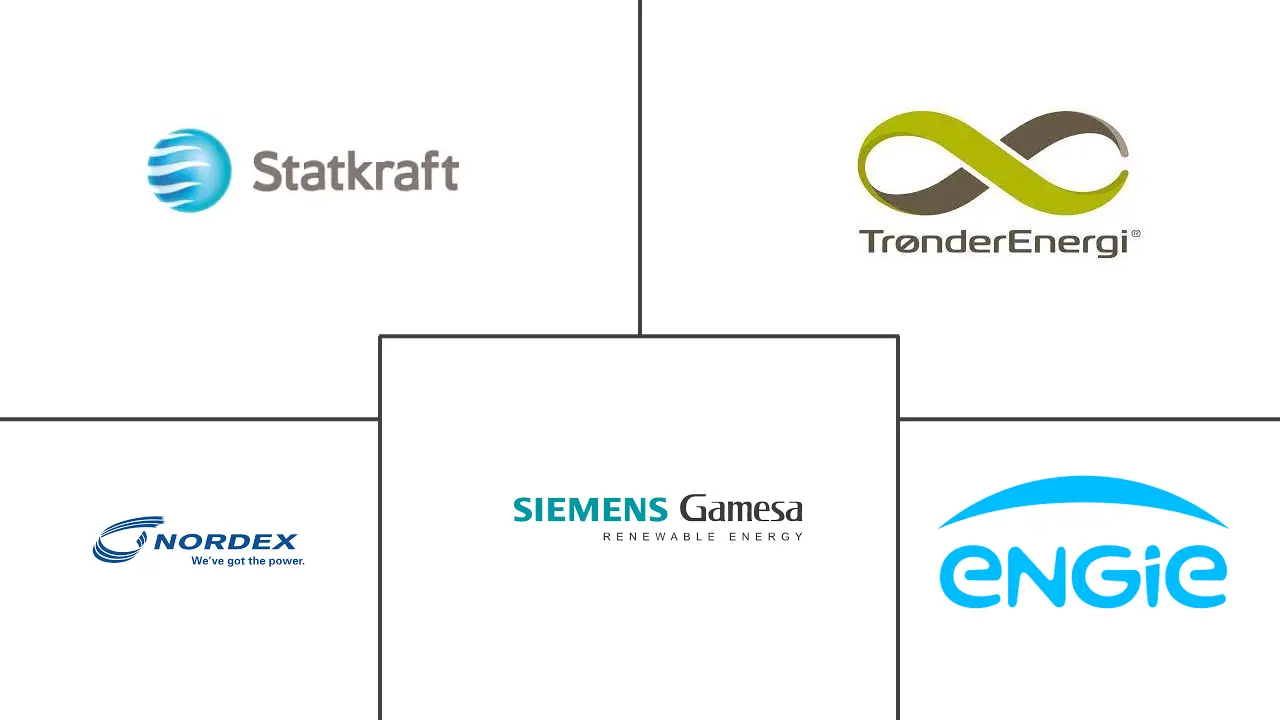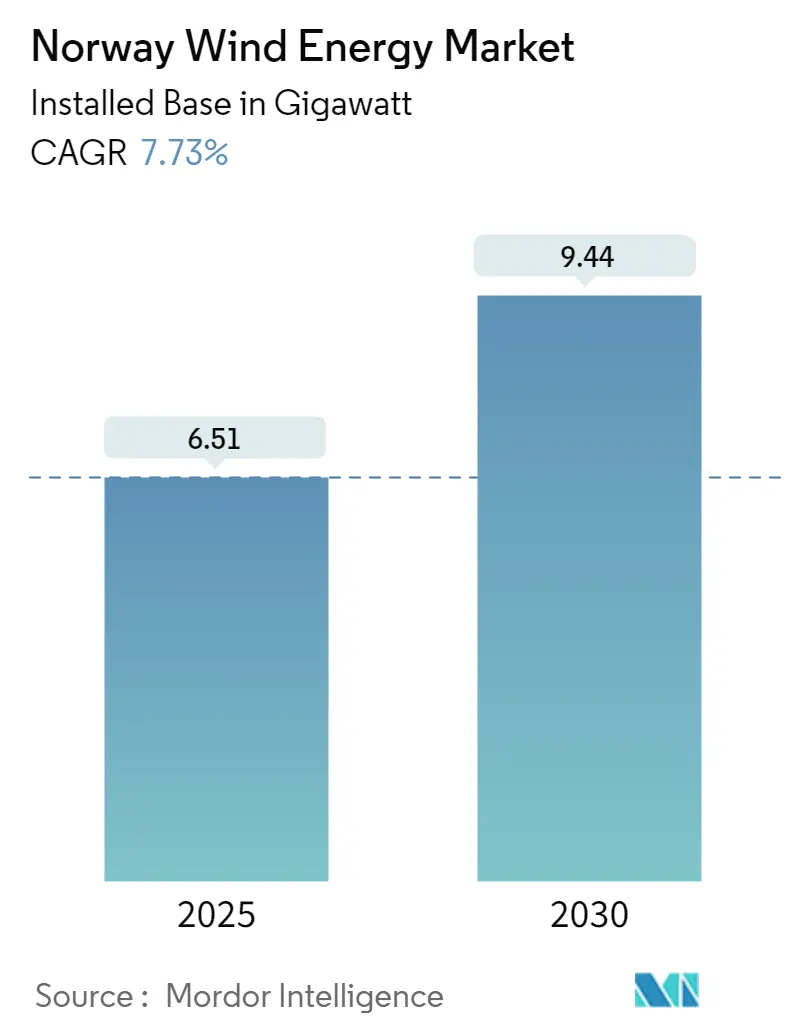
Norway Wind Energy Market Analysis by Mordor Intelligence
The Norway Wind Energy Market size in terms of installed base is expected to grow from 6.51 gigawatt in 2025 to 9.44 gigawatt by 2030, at a CAGR of 7.73% during the forecast period (2025-2030).
Over the long term, favorable government policies and regulations and abundant wind energy resources are expected to drive the market during the forecast period.
On the other hand, the land constraints for wind energy projects will likely hinder market growth.
Nevertheless, the penetration of hybrid energy solutions by combining wind energy with other renewable energy sources is expected to create significant opportunities for market studies during the forecasted period.
Norway Wind Energy Market Trends and Insights
Onshore Wind Energy to Dominate the Market
- The nation's diverse landscapes, including hills, valleys, and coastal areas, provide favorable conditions for harnessing wind energy. The abundance of suitable onshore locations enables the establishment of wind farms that can effectively tap into the kinetic energy of the prevailing winds.
- Moreover, onshore wind energy's economic and logistical advantages bolster its prominence. Onshore wind projects typically exhibit lower upfront costs and faster construction timelines than offshore installations. This makes onshore wind energy an attractive option for swift capacity expansion, aligning with Norway's ambitious renewable energy targets and time-sensitive climate goals.
- According to the International Renewable Energy Agency, in 2022, the cumulative onshore wind energy installed capacity was 5134 MW compared to 1710 MW in 2018, almost threefold growth in the last five years. Although the growth rate dropped between 2021 and 2022 due to opposition over projects over their impacts on landscapes and ecology, it is expected to improve in the coming years.
- For instance, in April 2022, the Norwegian government announced it was to resume licensing for new projects where local municipalities were supportive. With this announcement, the growth of the onshore wind energy segment is expected to increase during the forecasted period.
- Furthermore, the localization of benefits amplifies the appeal of onshore wind energy. Community engagement, job creation, and the development of local supply chains are tangible outcomes of onshore wind projects. The ability to foster regional economic growth and enhance energy self-sufficiency enhances the social acceptability of these projects.
- In conclusion, the envisaged ascendancy of the onshore wind energy segment within the Norway wind energy market is firmly grounded in the nation's geographical advantages, economic viability, and community integration. As Norway navigates the complexities of its renewable energy transition, expanding onshore wind energy emerges as a transformative force, poised to redefine energy generation, contribute to climate goals, and significantly influence the nation's journey toward a sustainable and resilient energy future.
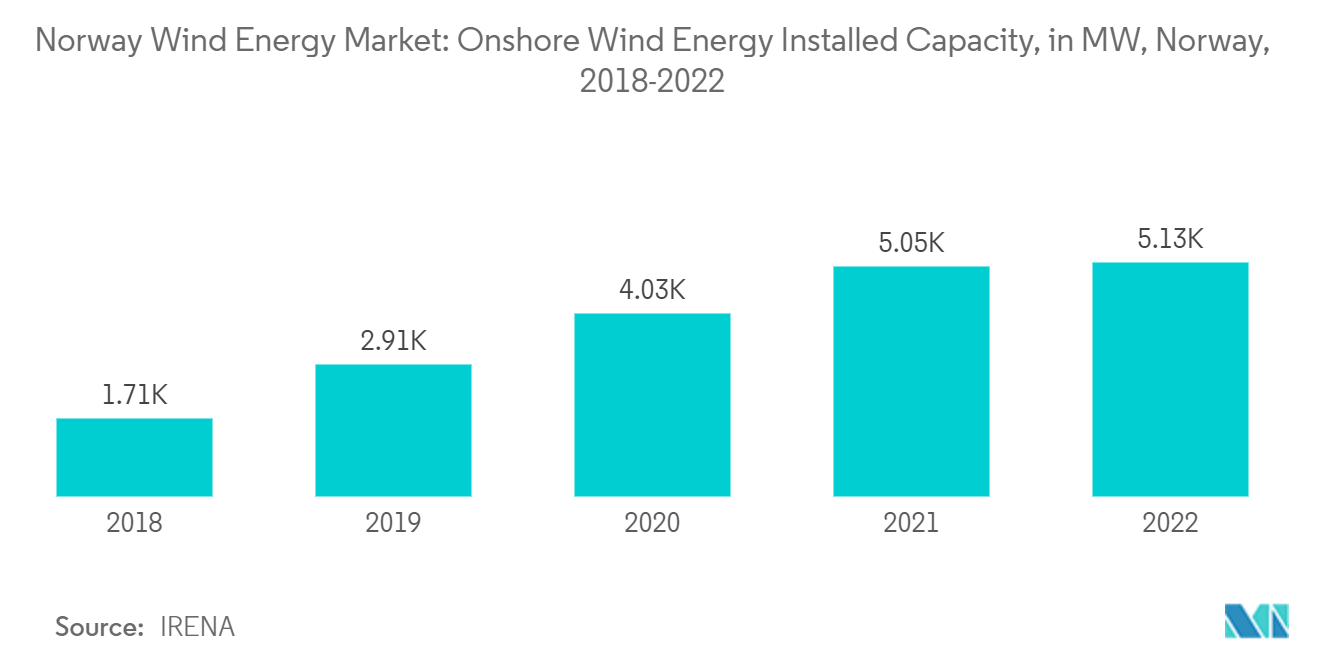
Increasing Adoption of Alternative Clean Energy Sources to Restrain the Market
- The proliferation of solar energy, hydropower, and emerging technologies such as offshore wind and hydrogen solutions offers a spectrum of choices for meeting renewable energy goals. As organizations and governments explore these alternatives, the relative attractiveness of onshore wind energy projects might be influenced, leading to potential shifts in investment allocation.
- Moreover, technological advancements and innovations in the renewable energy sector contribute to the diversified clean energy landscape. As offshore wind technology matures and energy storage solutions become more efficient, the competitive landscape for meeting energy demands evolves. This evolution prompts decision-makers to assess various factors, from resource availability and cost-effectiveness to grid integration and environmental impact.
- According to the Norwegian Water Resources and Energy Directorate (NVE), the bulk of new generation growth from 2021 to 2030 will come from new hydro capacity, with some growth from solar PV. Solar photovoltaics (PV) is expected to grow strongly from 321 MW in 2022 to 1796 MW in 2030.
- According to the International Renewable Energy Agency, solar PV adoption has risen recently. In 2022, the cumulative installed solar PV capacity was 321 MW compared to 68 MW in 2018. Solar PV adoption grew by more than fourfold between 2018 and 2022.
- For instance, in August 2023, Norwegian energy firm Hydro Rein and established landowner Opplysningsvesenets fond (OVF) embarked on a notable venture in the rapidly growing Norwegian solar industry. By creating Geisli Energi AS, a collaborative solar power venture, the two partners are poised to advance seven solar projects, collectively generating 655 MW of power across specific locations within Norway.
- Furthermore, pursuing energy security and grid stability further amplifies the role of alternative clean energy sources. While wind energy remains a formidable contributor, integrating complementary technologies like energy storage and smart grids is gaining prominence. As a result, the energy mix becomes increasingly complex, potentially influencing the extent of wind energy adoption.
- In conclusion, the envisaged restraint arising from the increasing adaptation of alternative clean energy sources within the Norway wind energy market is a product of evolving consumer choices, technological advancements, and the pursuit of a comprehensive and reliable energy mix. As Norway navigates this landscape, the wind energy sector must contend with dynamic market dynamics, adjusting strategies to accommodate a multi-faceted approach to clean energy while preserving its value proposition and contributing to the broader renewable energy transition.
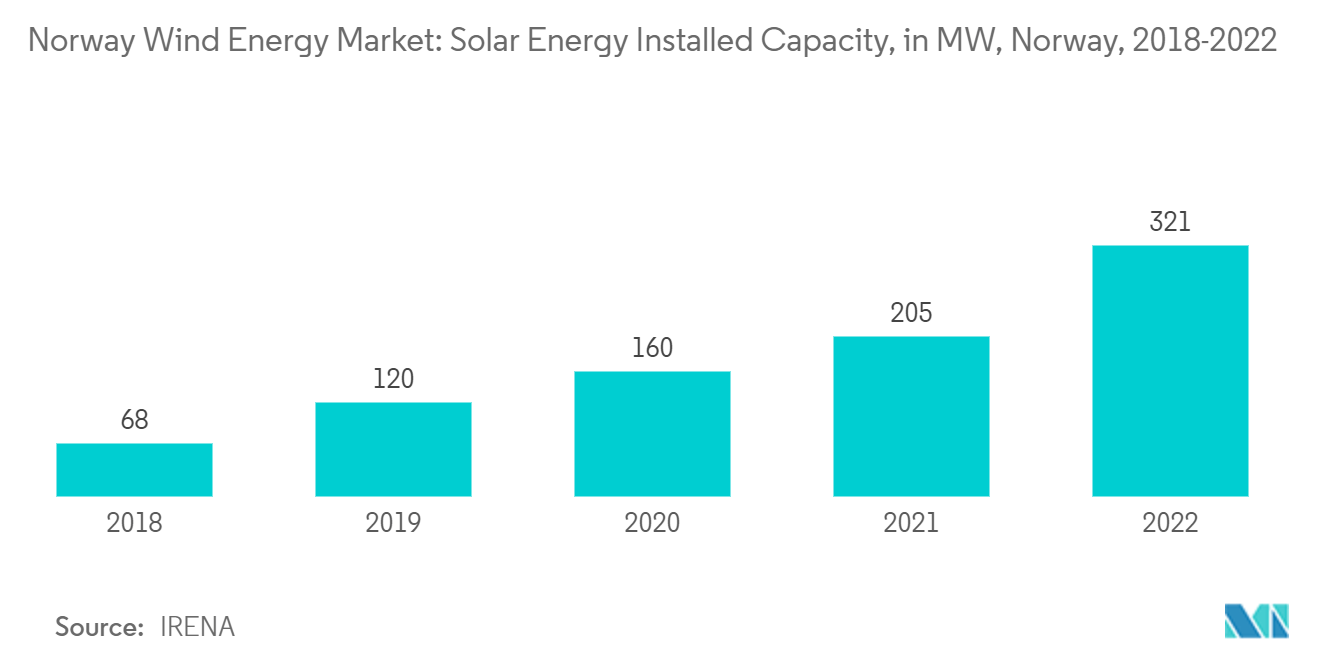
Competitive Landscape
The Norwegian wind power market is moderately consolidated. Some of the key players (in no particular order) include Statkraft AS, TrønderEnergi AS, Siemens Gamesa Renewable Energy SA, Nordex SE, and Engie SA., among others.
Norway Wind Energy Industry Leaders
Statkraft AS
TrønderEnergi AS
Nordex SE
Engie SA
Siemens Gamesa Renewable Energy SA
- *Disclaimer: Major Players sorted in no particular order
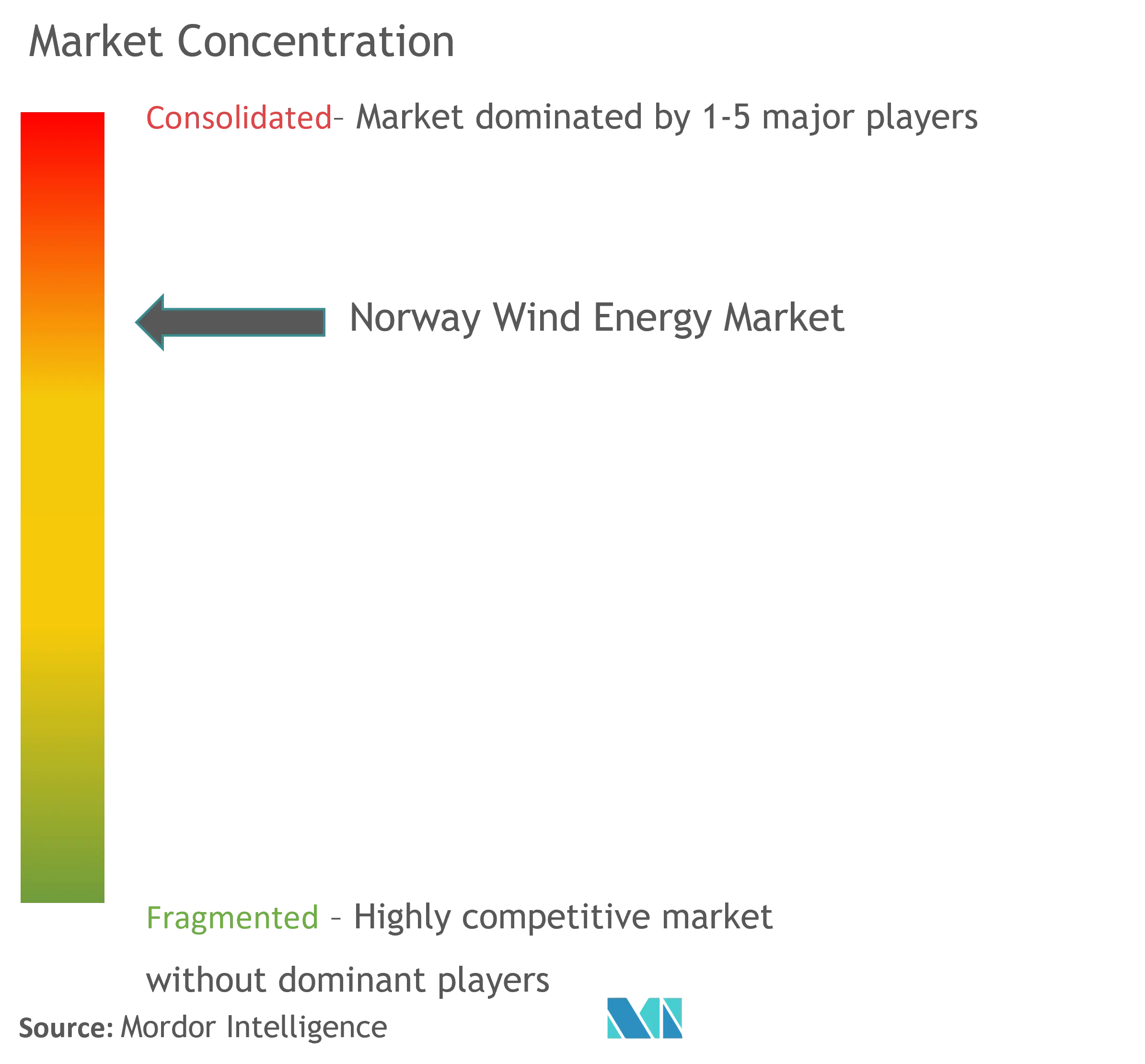
Recent Industry Developments
- August 2023: Equinor, Norwegian Energy Company, announced that the company had integrated the world's largest offshore wind energy plant. The plant's total capacity is 88 MW, covering 35% of Norway's annual electricity demand.
- February 2022: Agder Energi, a leading Norwegian power utility, and Macquarie's Green Investment Group (GIG) partnered to bid for a floating offshore wind project at Utsira Nord in the Norwegian North Sea. Utsira Nord (1.5 GW) is one of two areas the Norwegian government opened to licensing applications for offshore wind development.
Norway Wind Energy Market Report Scope
Wind energy refers to the process of harnessing wind power to generate electricity. It is a form of renewable energy that uses kinetic energy in moving air masses to produce electrical power. Wind energy is commonly harvested using wind turbines, which consist of large rotating blades mounted on a tall tower.
The Norwegian wind power market is segmented by location. By location, the market is segmented into onshore and offshore.
For each segment, the market sizing and forecasts have been done based on gigawatts (GW).
Key Questions Answered in the Report
How big is the Norway Wind Energy Market?
The Norway Wind Energy Market size is expected to reach 6.51 gigawatt in 2025 and grow at a CAGR of 7.73% to reach 9.44 gigawatt by 2030.
What is the current Norway Wind Energy Market size?
In 2025, the Norway Wind Energy Market size is expected to reach 6.51 gigawatt.
Who are the key players in Norway Wind Energy Market?
Statkraft AS, TrønderEnergi AS, Nordex SE, Engie SA and Siemens Gamesa Renewable Energy SA are the major companies operating in the Norway Wind Energy Market.
What years does this Norway Wind Energy Market cover, and what was the market size in 2024?
In 2024, the Norway Wind Energy Market size was estimated at 6.01 gigawatt. The report covers the Norway Wind Energy Market historical market size for years: 2019, 2020, 2021, 2022, 2023 and 2024. The report also forecasts the Norway Wind Energy Market size for years: 2025, 2026, 2027, 2028, 2029 and 2030.
Page last updated on:
Norway Wind Energy Market Report
Statistics for the 2025 Norway Wind Energy market share, size and revenue growth rate, created by Mordor Intelligence™ Industry Reports. Norway Wind Energy analysis includes a market forecast outlook for 2025 to 2030 and historical overview. Get a sample of this industry analysis as a free report PDF download.
